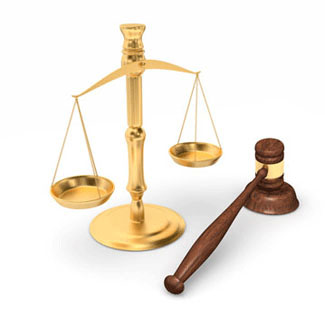
Johnson & Johnson Wins Latest California Talcum Powder Cancer Case
A Chinese woman, having grown up in Hong Kong. was unable to prove that Johnson's Baby Powder asbestos was the cause of her asbestos exposure
Thursday, December 19, 2019 - Johnson & Johnson has prevailed in the most recent trial against them and successfully defended their iconic talcum powder against the accusation made by a Chinese woman that asbestos in Johnson's Baby Powder caused her mesothelioma. According to the blog at Courtroom View News (CVN) the woman had alleged that Johnson's Baby Powder contained a design defect and that the company failed to warn and was negligent in marketing their decades-old cosmetic product. The 48-year old California resident claimed that she was exposed to asbestos by using Johnson's Baby Powder since her childhood in Hong Kong and subsequent relocation to the United States in 1984. Fong's attorneys centered their accusations on the fact that tests conducted here and abroad detected asbestos at the mining sources in the United States and abroad. "During Thursday's closings, Fong's attorney, Kazan, McClain, Satterley & Greenwood's Joseph Satterley told jurors tests showed talc mined in both Korea and Vermont, which he said supplied talc for the Baby Powder Fong used, contained asbestos fibers." Credible sources like Reuters, the FDA and others that have published articles that show that not only does talc contain asbestos, but also that Johnson & Johnson have been aware of this fact for over half a century. "During Thursday's closings, Fong's attorney, Kazan, McClain, Satterley & Greenwood's Joseph Satterley told jurors tests showed talc mined in both Korea and Vermont, which he said supplied talc for the Baby Powder Fong used, contained asbestos fibers." Talcum powder cancer lawyer representing families and individuals nationwide and have vast experience with a winning track record handling medical litigations and offer a free consultation.
Defense attorneys from Johnson & Johnson told jurors that the company had tested over 170,000 bottles of talc and could not find asbestos in any of them and that the product had to meet "very high expectations." Those vagueries have been debunked by scientists that have proven and even testified before the US Congress recently that the testing methods that Johnson & Johnson use and have used for decades are inadequate to detect microscopic asbestos particles, and that every scientist that uses the Liquid Separation Method has found asbestos in talc. Plaintiff expert witness Dr. William Longo recently told Congress in a certified statement that he has determined that the testing methods used by Johnson & Johnson and the cosmetics industry are inadequate. "The cosmetic talc industry has, in that time, accumulated hundreds, if not thousands of testing results that report no detectable or quantifiable asbestos. These reports, regarded by the manufactures as negative, very misleading as they result from analytical and methodological techniques with poor detection limits." Dr. Longo testified."
Johnson & Johnson attorneys continued to echo one another and restate the company's position on the safety of using Johnson's Baby Powder in light of the most recent verdict in favor of the company. "The facts are clear - Johnson's Baby Powder is safe, does not contain asbestos, nor does it cause cancer, as reflected in more than 40 years of scientific evidence." The verdict, however, may be more likely due to the plaintiff being unable to prove that she had not been exposed to other sources of asbestos having grown up in Hong Kong, China.
 OnderLaw, LLC -
OnderLaw, LLC -